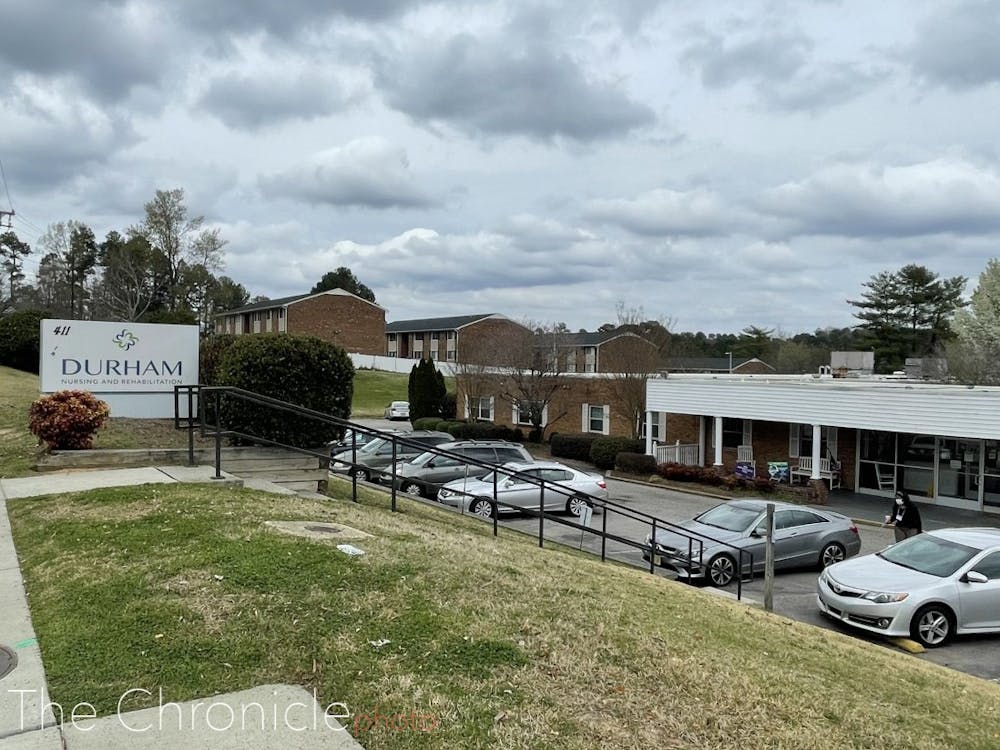Student volunteers at the Duke Nursing and Rehabilitation Center have used virtual resources to stay connected with residents over the past year, though Zoom complicated things for both parties.
The DNRC is a short-term care facility located less than a mile away from the main hospital system. In normal years, student clubs and other volunteers put on performances, hold concerts and interact with the residents, but during the COVID-19 pandemic, in-person activities haven’t been allowed.
While several student organizations have adopted Zoom as a means of staying connected with the center, the process of teaching the residents how to operate video calls has been arduous. DNRC Volunteering Coordinator Lavern Hubbard said that the current system is flawed for both the students and elderly residents.
“It is hard for the residents to try to use iPads for Zoom; they just have no clue what’s going on,” Hubbard said. “We try to split up the [students] and the residents into breakout rooms, and sometimes there might be more students than residents. What can you do then? It’s overwhelming for them.”
The ongoing struggle with video calls is one of the biggest obstacles the DNRC has yet to overcome. Before the pandemic began, volunteers would typically interact with the same residents each time they visited the center, developing lasting relationships.
“A lot of residents don’t get to see their families, so it really helps us out a lot when students can come in and get to know them, they feel more comfortable,” Hubbard explained. “Some residents have so much to say in person, but it’s hard to follow over the iPad, since they don’t know who they are speaking to. A lot of them could use a buddy at this time to speak with them or play a few games.”
Harmonies for Health is one student organization that volunteers at the DNRC on a regular basis. The club aims to “bring empathy and kindness to the local healthcare community through live musical performances,” according to Co-president Annalise Bracher, a senior. Unfortunately, this mission has been affected due to COVID-19 guidelines.
“In person, there were a lot of organic, spontaneous reactions from the residents that would happen either during or between the music—things like clapping, singing or comments, so there’s definitely been a sense of loss regarding that interactive aspect [since] having moved to the virtual format,” Bracher said. “We like to have a chance to talk with the residents to ask them how they’re doing, what they thought of the performances, if they have requests… but that becomes difficult with the technical limitations.”
Although Harmonies for Health is still untangling their issues with virtual performances, Bracher and the other club members have discovered that their Zoom calls serve another important purpose: fostering resident-to-resident communication.
“Given the isolation the residents are experiencing because of the pandemic, we try our best to find ways to continue our past interaction with them,” Bracher explained. “They’re all contained to their own rooms and don’t really get to see one another except by popping their head out into the hallway to wave hello, so we’re really happy to see that the Zoom calls can also work as a space for them to check in with each other.”
Adopt-A-Grandparent is another student organization that aims to “provide companionship and emotional support to older adults,” said senior Vivian Shing, the organization’s president. Shing said that the lack of in-person interaction has made it difficult to form the deep connections that club members are used to making with residents. Despite this, the organization has found several new ways to engage the residents, she said.
“We’ve tried adapting some of our past in-person activities to an online format, which a few residents have really enjoyed,” Shing said. “We have also organized some letter writing initiatives, in which students send handwritten cards and letters to the DNRC. While I don’t think video calls and letters can fully replace the value of a face-to-face conversation, they’re the closest we can get to continue providing social support to the residents while keeping them safe.”
There is hope that volunteers will be able to resume their visits to the center in due time. Hubbard recently spoke with DNRC supervisors about allowing small groups to interact with residents, and early feedback has given her a sense of optimism.
“I was just told that the center will possibly be able to open up to visitors soon, but we are working on seeing who can come,” Hubbard said. “It’ll depend on masks and COVID rules, but we might just be able to let some of these clubs start coming back to the center. The residents absolutely miss the students and their great programs.”
Get The Chronicle straight to your inbox
Sign up for our weekly newsletter. Cancel at any time.
Gautam Sirdeshmukh is a Trinity senior and a staff reporter for the news department. He was previously the health & science news editor of The Chronicle's 117th volume.

